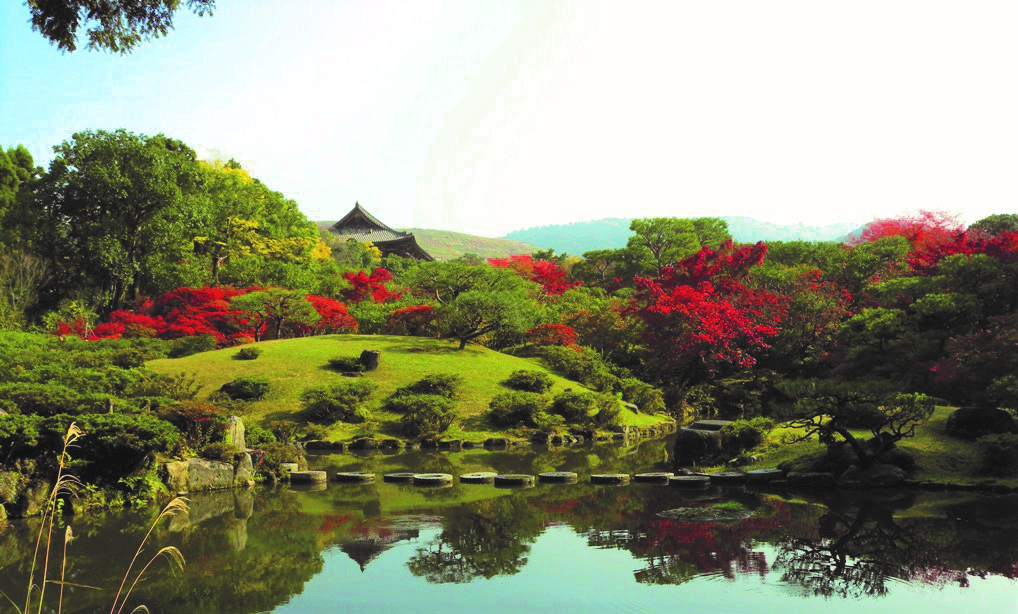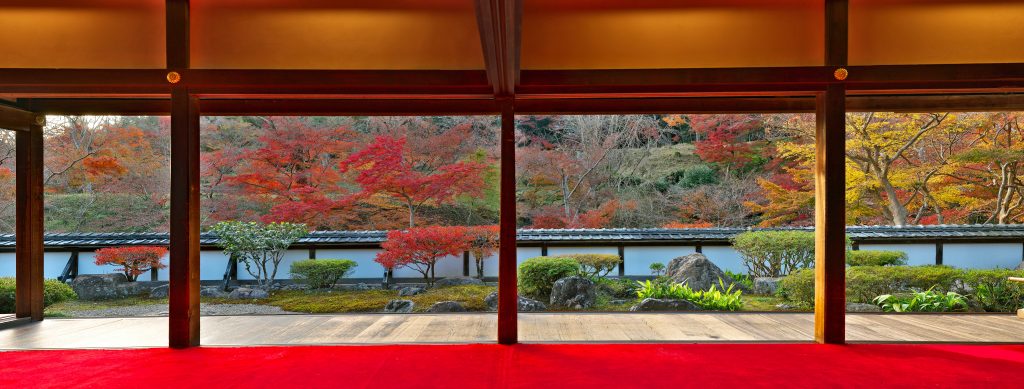Recommendations for Autumn in Nara City
2019/10/03
It is now the autumn tourism season.
Nara City, where our office is located, is bustling with tourists and families.
You can ride both JR and Kintetsu trains into Nara, and one of our city’s characteristics is its accessibility from within the Kansai Region.
It takes about 50 min. from Osaka, 45 min. from Kyoto, and 80 min. from Kobe.
To enjoy Nara even more, I absolutely recommend staying overnight.
Though day trips are possible thanks to its easy access, the real beauty of Nara is its morning. With fewer people, you can enjoy the fresh morning air all on your own and relish this special trip.
As the day time is especially crowded in the autumn, you can take your time and enjoy the scenery and atmosphere of the ancient capital.
For those who like sake, you can visit some of the local drinking establishments at night. Please enjoy the variety of local Japanese sake, many of which are made in Nara and are not sold in other parts of Japan.
1. Nara Park
Tourism in Nara starts with Nara Park. It is known as Nara Deer Park, not just in Japan, but around the world. In the wide area of Nara Park, trees are colored in vibrant reds and yellows, giving us an incredibly beautiful contrast with the blue sky on sunny days.
Also, since there are many kinds of trees, we can enjoy a relatively long period of colored leaves, along with the scenic fallen yellow leaves spread across the ground like a carpet.
Though it is often a crowded place due to it being a famous tourist spot, the area surrounding Daibutsu-ike Pond has relatively few people and I recommend it.

2. Isui-en
Isui-en is located between Todai-ji Temple and Kofuku-ji Temple, and features two kinds of walking gardens from two different periods.
The chisenkaiyu-shiki style garden is a kind of Japanese garden, usually centered around a large pond that visitors walk around while they enjoy viewing the garden.
Famous as some of the most beautiful gardens in Japan, Kanazawa’s Kenroku-en and Okayama’s Koraku-en are also walking gardens.
Of the two pond-centered walking gardens in Isui-en, one is the front garden, made in the early Edo period as a separated space from the surrounding area. The other is the back garden, which was made during the Meiji period and borrows the surrounding scenery of Mt. Wakakusa and the great south gate of Todai-ji Temple.
Isui-en has kept a quietness that makes it hard to believe that it is in such a central location. The beautiful trees reflected on the surface of the pond are a truly wonderful sight.

3. Shoryaku-ji Temple
Shoryaku-ji Temple is a temple that is in the mountains and somewhat separated from the centre of Nara City.
There are over 3,000 maple trees on the mountain, and the leaves change color in order when the season arrives. The greens, yellows, and reds of the trees color the mountain, and many tourists visit just to catch a glimpse of this scenic place.
Looking across the borrowed scenery from Fukuju-in is an especially great sight.
It is said that Shoryaku-ji Temple is the home of Japanese refined sake, and every January, they make the bodaimoto for the sake inside the temple. When the leaves change colors every autumn, Shoryaku-ji Temple offers tastings and a chance to purchase the bodaimoto refined sake.
There is a temporary bus that runs from JR Nara and Kintetsu Nara stations to Shoryaku-ji Temple every autumn when the leaves change color.


01
FIND YOUR FAVORITE
TRIP ON OUR WEBSITE.
SEND US AN INQUIRY.

02
PERSONALIZE THE TRIP
TO YOUR INTERESTS
WITH OUR CONSULTANT.

03
20% DEPOSIT TO CONFIRM.
BALANCE PRIOR TO ARRIVAL.
PAYMENT BY CC OR TT.

04
WE WILL
MEET YOU
AT THE AIRPORT.

05
DISCOVER THE
TREASURES!